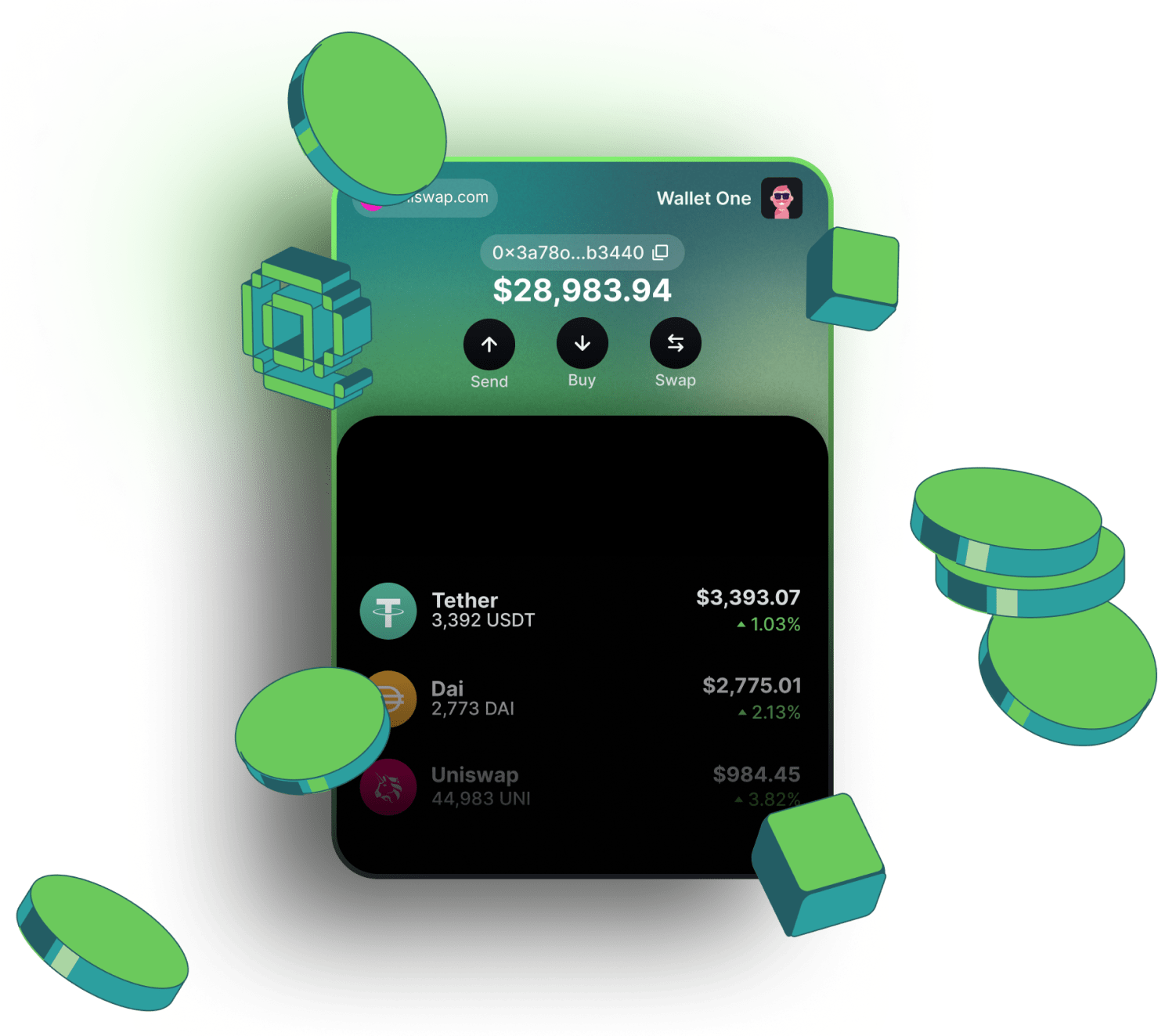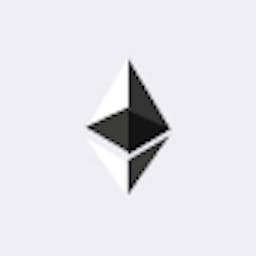Wigwam is the best  Avalanche blockchain crypto wallet
Avalanche blockchain crypto wallet

Why choose the Wigwam crypto app?
Work with Avalanche Testnets and Mainet
Buy Avalanche tokens, including native token, by using a credit card
Swap Avalanche-based tokens directly in the wallet
Possibility to connect the wallet to all Avalanche blockchain dAps: DeFi, DAO, Gamings, etc
How to get a Avalanche address in Wigwam web wallet
Create a wallet in Wigwam
Choose a Avalanche network from the dropdown menu
Copy you Avalanche address
About Wigwam Avalanche wallet
Welcome to Wigwam, your gateway to the Avalanche network. Our Avalanche wallet is designed to make managing cryptocurrencies straightforward and hassle-free, perfect for those new to the crypto world. With Wigwam, you can trade tokens, dive into DeFi, and explore NFTs without the complexity.
Here's how Wigwam Avalanche wallet makes your crypto experience better:
- Easy multi-blockchain access: Connect with various blockchains effortlessly. Our Avalanche web wallet requires no technical know-how.
- Quick crypto purchases: Use your card to buy tokens instantly. It's fast, easy, and secure with our Avalanche crypto wallet.
- NFT gallery: View and manage your Avalanche NFTs easily. Plus, with our NFT preview, you'll always know what you're sending.
- Portfolio tracking: Stay on top of your investments with real-time updates on Avalanche token values.
- Unmatched security: Wigwam is an open-source, externally audited, non-custodial blockchain wallet that's also Ledger-compatible.
- Seamless Web3 experience: Immerse yourself in DeFi, play-to-earn games, and NFT marketplaces without the fuss.
- Multi-account management: Handle multiple wallets through one easy-to-use interface.
- dApp interaction control: You're in total command of how your wallet interacts with decentralized apps.
Avalanche blockchain review
It almost became a norm in the Web 3.0 industry that blockchain networks have to be slow and not scalable to ensure security and decentralization. However, Avalanche emerged as one of the successful networks to break this norm by introducing a blockchain architecture that is scalable, secure, and decentralized.
The team behind Avalanche achieved this through its unique consensus model that allows quick finality and high throughput without affecting the decentralization wing of the protocol. In this article, we will cover various aspects of the Avalanche network ranging from its origin to the challenges it faced.
History of Avalanche
Avalanche was launched in September 2020 by Ava Labs, a New York-based team, with nearly $300 million in funding. This blockchain network was founded by Emin Gün Sirer, Kevin Sekniqi, and Maofan "Ted" Yin with the vision to build a blockchain network with high Security, Scalability, and Decentralization attributes with extended abilities like interoperability and eco-friendliness.
Key milestones
Avalanche (AVAX) has witnessed significant milestones since its launch as listed below, some of them are:
- July 2020 ~ Avalanche’s public sale went live and reached $42M within 4.5 hours.
- October 2020 ~ Avalanche’s integration with Ledger
- November 2020 ~ Avalanche disclosed fresh Blockchain options with Apricot, its first Major Upgrade.
- April 2021 ~ $1B trade volume across all DEX’S NFT Marketplace v1 launched.
- July 2021 ~ Over 1,000 block-producing validators, Avalanche (AVAX) Is Listed on BitMart, Using AVAX orders on Amazon, Walmart, and eBay from Shopping.io
- July 2023 ~ Avalanche reaches 1 Million Monthly Active Users
Technical overview
Most chains use either Classical consensus or Nakamoto consensus.
In Classical consensus, every node talks to every other node to broadcast their choices. This is very efficient for small numbers of nodes, but for a big network of nodes, this consensus won’t work.
In the Nakamoto consensus, miners work and distribute their results. This model is scalable to a large number of users without compromising on performance but due to the presence of humans, the performance is terrible to begin with.
Avalanche picks the best of both the consensus models, connecting the strengths of each to create a system that is highly scalable, robust, and decentralized. This enables high throughput, swift finality, and energy efficiency.
The three chains in Avalanche
Three blockchains make Avalanche’s core platform.
- Exchange Chain (X-Chain)
- Contract Chain (C-Chain)
- Platform Chain (P-Chain)
Exchange Chain (X-Chain)
Avalanche’s X-Chain, short for “Exchange Chain” is a core component of the Avalanche platform, it serves as the main platform for creating and trading assets. It offers high-speed asset transfers, quick transaction confirmations, and low fees.
The X-Chains is also a key element for various DeFi applications, assets issuance, and cross-chain compatibility, which helps in making Avalanche a scalable and decentralized blockchain platform.
Contract Chain (C-Chain)
Avalanche’s C-Chain, short for “Contract Chain” is dedicated to contract execution which helps the developers create and deploy decentralized applications (DApps) and execute contracts. This chain’s developer-friendly environment and Avalanche’s unique consensus mechanism combine to provide rapid transaction confirmations and scalability.
Platform Chain (P-Chain)
Avalanche’s P-Chain, short for “Platform Chain” , oversees the network coordination and facilitates cross-chain interoperability. P-Chain looks over the subnetworks and bridges for assets and data to flow across the ecosystem.
This chain is the glue that plugs various components of Avalanche and governs over them to empower network participants to make decisions collectively. This chain makes cross-chain collaboration possible.
AVAX token
AVAX, the native token of the Avalanche blockchain, is the lifeblood of the Avalanche blockchain. It is not just a passive store of value but a dynamic and integral asset within the Avalanche ecosystem.
- AVAX holders can stake their tokens to secure the Avalanche network and earn rewards.
- Token holders have the power to vote on proposals, shaping the future of the Avalanche blockchain.
- AVAX is the primary currency for transactions and smart contracts on the network.
- Facilitates interoperability and cross-chain transactions.
Crypto Wallets that supports Avalanche blockchain
Avalanche is an EVM-compatible blockchain, so the most popular Web3 wallets with dApp connection feature support it. Some of them are:
DeFi Ecosystem on Avalanche
Avalanche’s DeFi (Decentralized Finance) environment ensures seamless interoperability and scalability followed by Ethereum Virtual Machine (EVM) compatibility, which makes the platform an ideal choice for every DeFi buff.
Let’s have a look at some of the important attributes of Avalanche’s DeFi ecosystem:
- Scalability: Avalanche is packed with scalability, efficiency, and a consensus engine that works on countless global networks with various devices. Each network works in the peer-to-peer system with low latencies and guarantees high transactions.
- Vigorous Security: Avalanche is relatively more secure owing to its unique consensus model that is inclusive and not limited to a small count of the validators (as typically observed in other chains). On top of that, the whole network audits the transaction validity as part of the consensus as it is added to the chain.
- Enhanced dApp Performance: Avalanche is loaded with various features, such as a virtual machine, a subnetwork model, and support for Ethereum-standard RPC calls, all of which enhance the overall performance of dApps and significantly improve the user experience.
- Environmentally Friendly: Avalanche has cultivated an ecosystem that prioritizes secure and swift transactions while also upholding its commitment to environmental sustainability. Supported by a proof-of-stake protocol, it encourages eco-friendly practices and paves the way for safer and more resilient business opportunities in the long term.
Some of the popular DeFi projects on the AVAX blockchain include:
- Benqi.fi - liquid stacking, lend and borrow protocol on Avax
- Aave.com - popular multichain lending protocol that supports Avalanche blockchain
- GMX.io - is a decentralized perpetual exchange that allows trading BTC, ETH, AVAX and other top cryptocurrencies with up to 50x leverage directly from your wallet
- Use the Wigwam DeFi crypto wallet to your regular work with the Avalanche DeFi.
NFT Marketplaces on Avalanche
While Ethereum has been a primary platform for NFTs (Non-Fungible Tokens), it has faced challenges related to high gas fees and network congestion. Avalanche has emerged as a compelling alternative for NFT marketplaces. It offers high throughput, scalability, and low transaction cost, which makes the NFTs market more accessible to users.
Avalanche has multiple NFT marketplaces like “VeeFriends”, “The Avalanche Rush”, and “Avalanche NFT Hub”. These marketplaces feature a wide range of NFTs, serving as a hub for artists and collectors to mint, buy, sell, and trade NFTs.
These marketplaces leverage Avalanche’s blockchain capabilities to offer faster transaction times and lower fees.
Features and Innovations Introduced by Avalanche
- Avalanche consensus: An innovative consensus mechanism that combines the best aspects of Classical and Nakamoto consensus.
- Environmental friendliness: The proof-of-stake protocol used by Avalanche is eco-friendly, which makes Avalanche a sustainable alternative to energy-intensive proof-of-work blockchains.
- Performance optimization: Avalanche comes with features like a virtual machine, subnetwork model, and Ethereum standard RPC calls which enhance the overall performance of dApps.
- Decentralization: Avalanche has reduced the risk of centralization by enabling millions of independent validators to promote the highly decentralized network.
- Safe and rapid transactions: Avalanche emphasizes secure and rapid transactions, it can process 4500 TPS (Transactions Per Second).
- Interoperability: Avalanche supports integration with various blockchain networks like Ethereum.
There is no doubt to the fact that Avalanche has come a long way to emerge as a scalable, secure, and decentralized network. From executing transactions at the lightning speed of 4500 transactions per second to charging a minimal gas fee of $0.08 USD (average), the network has been successful in creating a user-friendly experience for the users.
FAQ
The transactions on Avalanche require the payment of a transaction fee in AVAX to prevent spam. The transaction fee (AVAX) is burned (destroyed forever).
Utilizing a private Avalanche wallet for your AVAX coins is the most secure approach to transact. While there isn't a single "best" wallet universally recognized, here are some notable options to consider:
2. OKX Wallet
3. Metamask Wallet
4. Trust Wallet
These wallets provide various features and levels of security, so the users can choose the one that best suits their needs.
Step 1: Log in to your MetaMask account, click on the Network to populate the dropdown options, and select Add Network.
Step 2: You will find the list of all the popular networks that you can connect to your MetaMask wallet. Navigate to Avalanche network from the list and click on the corresponding Add button.
Step 3: Click on Approve, in the prompt window.
Step 4: Click on Switch to Avalanche Network C-Chain.
According to the data from DappRadar, here are the top five most popular projects running on top of the Avalanche network across different categories:
DeFi:
1. Aave V3
2. Benqi
3. Stargate
4. Curve
5. Trader Joe
NFTs:
1. Castle Crush
2. Dokyo
3. OG Odin
4. Raini
5. BraiNFT
Games:
1. Monsterra
2. Snail Trail Game
3. Chikn
4. Pizza Game
5. The Legend of Aurum Draconis





